In the heart of Bali, where ancient traditions meet modern innovation, a vibrant movement is emerging—one that honours the island’s centuries-old artistic heritage while fostering the creative spirit of a new generation. This movement thrives at Studio Gelombang, an inspiring sanctuary founded by Made Griyawan, a visionary artist committed to preserving and evolving the Batuan painting style. Griyawan’s belief in the power of both tradition and innovation is guiding the future of Balinese art, one brushstroke at a time.
A Studio with a Mission
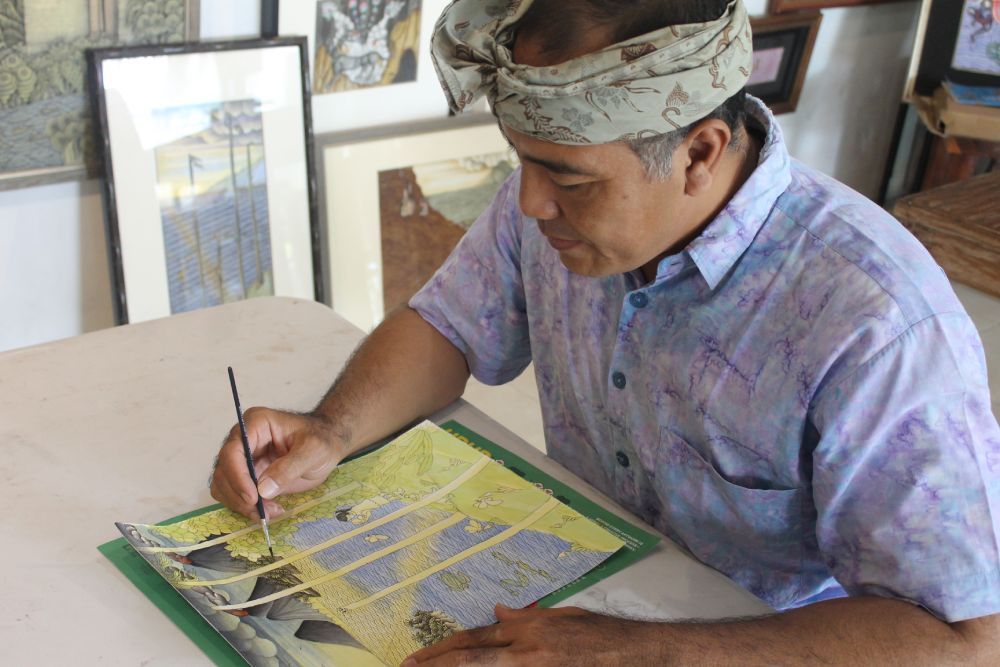
Founded in 2018, Studio Gelombang is not just an art space—it’s a transformative haven for young artists eager to learn, explore, and contribute to the living tradition of Batuan painting. Nestled in the culturally rich village of Batuan, the studio serves as a gathering point for emerging painters, providing not only technical guidance but also a deep understanding of the spiritual and philosophical dimensions of Balinese art.
“I want young artists to see tradition not as a cage, but as a foundation,” says Griyawan. “They must understand its roots before they can carry it forward.”
The studio’s name, Gelombang —meaning “wave” in Indonesian—symbolizes the continuous flow of creativity. Like the ocean’s waves, each generation of artists adds unique energy to the movement, ensuring that Batuan’s painting evolves rather than becoming a relic of the past.
The Journey of Made Griyawan
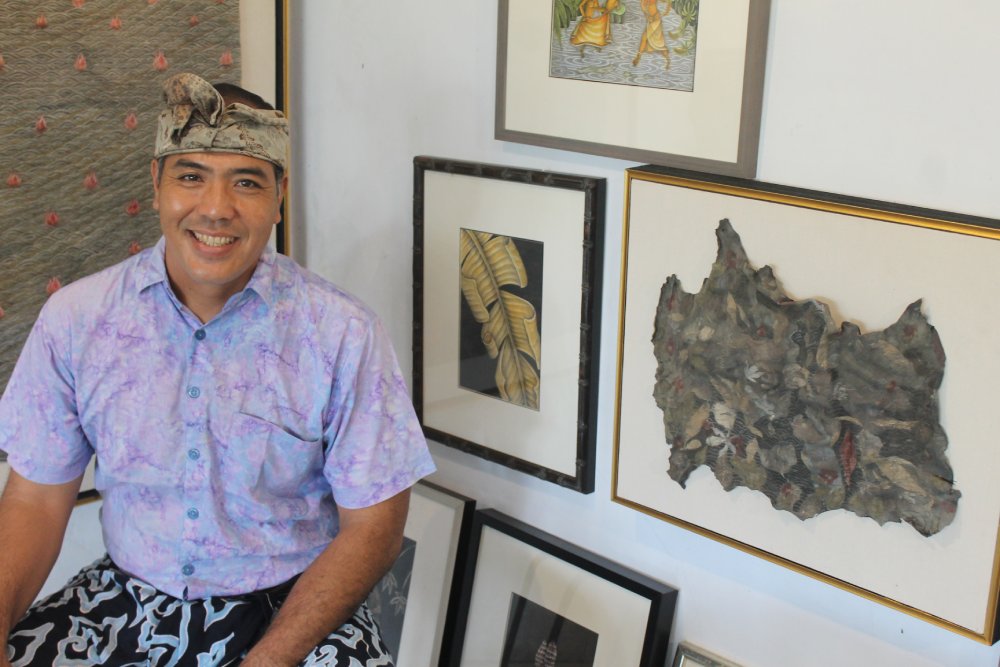
Studio Gelombang’s story is inseparable from the story of its founder. Made Griyawan was born in 1979 into a family of artists, he was surrounded by the mesmerising intricacies of the Batuan painting style from an early age. His father, the celebrated painter I Wayan Taweng, was his first and most significant influence. Griyawan recalls watching his father for hours, captivated by the meticulous process and discipline of painting.
“My father always told me, ‘Paint what you love, not what I do,'” says Griyawan. “As a child, I wanted to be like him, so I copied his work. One day, he tore it apart. I was devastated, but now I understand—he was teaching me the value of originality.”
Though Griyawan was passionate about art, his early life took an unexpected turn. As a teenager, he excelled in volleyball and briefly considered a career in sports. However, after high school, he faced a challenging crossroads: to follow a conventional job, pursue sports, or dedicate himself to painting.
In the end, life decided for him. When his wife, who worked in a hospital, became pregnant, they agreed that Griyawan would stay home to care for their child. This gave him the time and space to fully immerse himself in painting—a decision that would shape his artistic career. His dedication soon paid off when American writer Bruce Granquist discovered his work and featured it in the book Inventing Art: The Paintings of Batuan Bali (2014). “That was the moment I realized my father was right: if you commit fully to something, the universe responds,” Griyawan reflects.
The Philosophy of Batuan Art
Batuan painting is one of Bali’s most revered artistic traditions. Known for its intricate compositions, rich detailing, and strong narrative elements, it often depicts scenes from mythology, daily life, and spiritual philosophy. Unlike other Balinese styles that favour vibrant colours and open spaces, Batuan art is darker, denser, and laden with layers of meaning. “Batuan art is about storytelling,” says Griyawan. “Each painting has a soul, a philosophy woven into its lines and shadows. It’s not just about beauty; it’s about wisdom.”
For Griyawan, his personal evolution as an artist has centred on deepening the philosophical dimensions of his work. His paintings explore themes of balance—between light and dark, tradition and modernity, chaos and harmony. One of his most significant works, The Journey of Water, reflects his contemplation of Bali’s water sources: “Where does the water in our lakes come from? If it’s from rain, why does it never dry up during droughts? I began to see water as a metaphor for life—sometimes, the answers lie beneath the surface.”
Batuan painting is not simply a technical endeavour; it’s a meditative process—a form of “creative meditation” that allows the artist to embark on an inward journey of reflection and mindfulness.
Balancing Tradition and Innovation
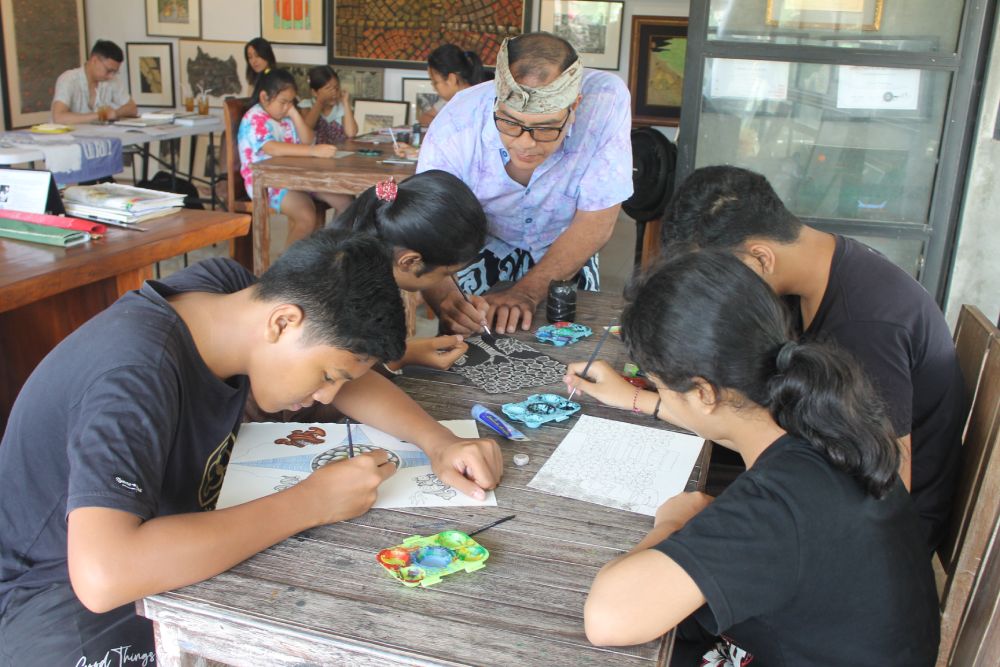
One of the greatest challenges facing contemporary Batuan artists is maintaining the delicate balance between preserving the integrity of tradition and embracing modern influences. While some purists argue that deviation from traditional methods dilutes the cultural essence, Griyawan views adaptation as essential for the art’s survival.
“Tradition should never be static,” he asserts. “If we freeze it in time, we risk losing its relevance. The soul of Batuan painting must remain intact, but its methods and materials must evolve.”
This belief is evident in Griyawan’s own work. Over the years, he has explored the use of natural dyes derived from leaves, fruits, and flowers, offering a sustainable approach to traditional painting. “Using organic pigments connects me more deeply to nature,” he explains. “It ensures our art is not just about the past, but about the future.”
The Role of Digital Media and Globalization
In today’s interconnected world, digital media has transformed how art is shared and appreciated. While some worry that social media dilutes the authenticity of traditional art, Griyawan sees it as a powerful tool for global outreach. “Social media allows us to reach audiences beyond Bali, beyond Indonesia,” he says. “It gives young artists a platform to showcase their work and learn from others.”
Studio Gelombang has harnessed digital tools to offer virtual workshops, connect with international artists, and even collaborate with young animators who reinterpret Batuan themes through digital media. Griyawan encourages young artists to embrace these innovations, even if digital art is not his expertise.
“Each generation has its way of expressing itself,” he reflects. “The key is to stay rooted in your identity while embracing the possibilities of the future.”
The Future of Batuan Art
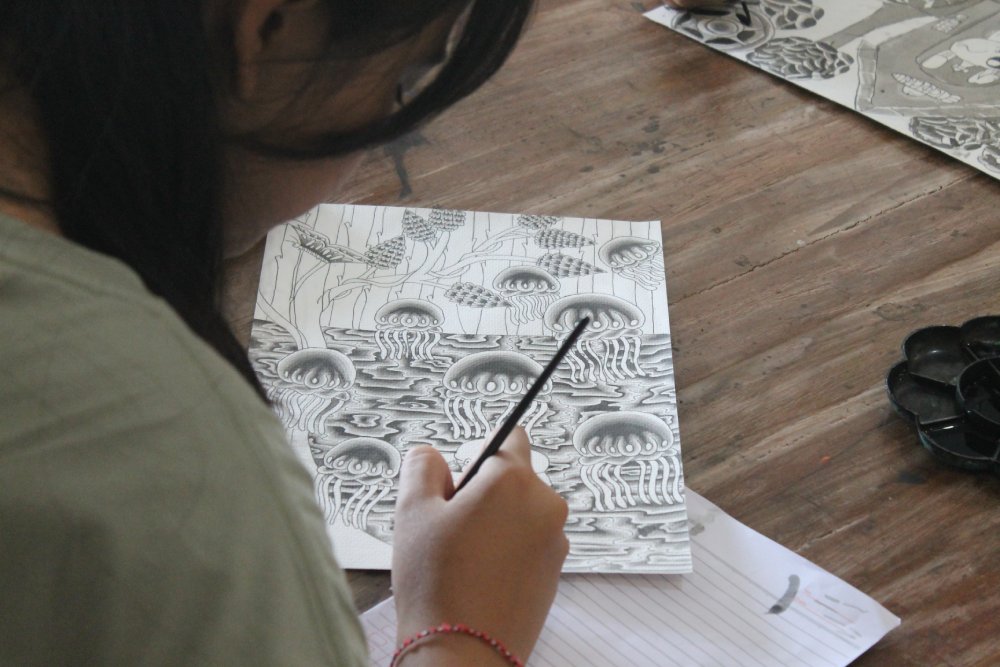
Looking ahead, Griyawan envisions Studio Gelombang as more than just an art space. He wants it to be a vibrant hub for collaboration, learning, and innovation—a place where both seasoned artists and young talents can grow together. He plans to expand educational programs, making art more accessible to children and young adults in Bali.
“I want young people to engage with our traditions—not because they’re forced to, but because they find meaning in it,” he says. “For Batuan art to survive, it must continue to inspire.”
One of his long-term goals is to establish an international exchange program, where Balinese artists can showcase their work abroad, and global artists can bring fresh perspectives to Bali. His efforts are already bearing fruit—he has exhibited in Japan and is preparing for a solo exhibition in New York.
“Art is a bridge between cultures,” he says. “By sharing our stories with the world, we keep our traditions alive.”
A Legacy in the Making
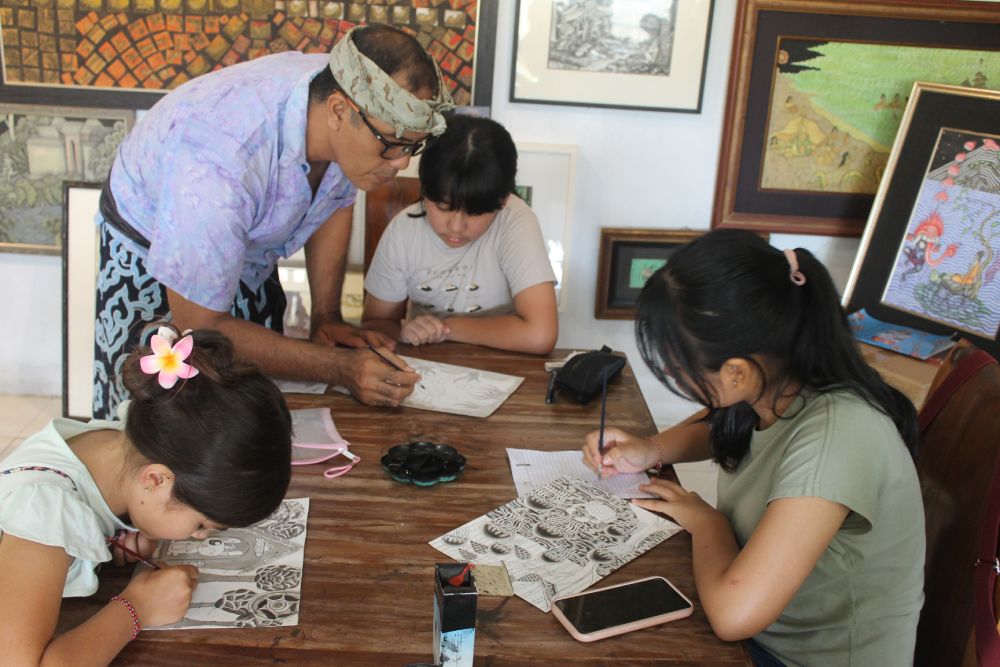
For Made Griyawan, preserving Batuan art is not just about safeguarding a technique—it is about honouring a way of life, a philosophy, and a lineage of storytelling that has endured for centuries. His work as an artist and mentor ensures that the waves of creativity will continue to flow, carrying the Batuan legacy into the future.
“I am proud to be part of Bali’s cultural heritage,” he says. “Our traditions are not burdens; they are gifts. It is our responsibility to keep them alive—for ourselves and for the generations to come.”
As Studio Gelombang remains a sanctuary for aspiring artists, one thing is certain: the spirit of Batuan painting, like the endless waves of the ocean, will never cease to move.
Studio Gelombang
Jalan Alas Arum Gang Lasem, Batuan, Kecamatan Sukawati, Gianyar
madegriyawan@gmail.com
IG: @madegriyawan @studiogelombang









